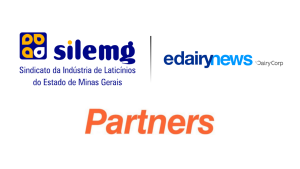
The fight to protect common food names is fundamentally about securing fair competition and supporting U.S. agriculture on the global stage.
In a move applauded by key dairy industry players, the U.S. Trade Representative’s (USTR) recent decision to highlight the protection of common food names in its 2025 Special 301 Report has received significant attention. The Consortium for Common Food Names (CCFN), National Milk Producers Federation (NMPF), and U.S. Dairy Export Council (USDEC) have voiced their support, recognizing the USTR’s efforts to spotlight these crucial intellectual property concerns on a global scale.
The Threat of Geographical Indications
The issue at hand is the European Union’s sustained campaign to monopolize common food names such as Parmesan and feta via protectionist geographical indication (GI) policies. These policies aim to restrict the use of these widely recognized food and beverage terms solely to specific European producers, thereby cutting off U.S. producers from important markets. This protectionist stance is seen as a direct barrier to fair competition, one that intentionally limits market access for U.S. and international producers.
“The European Union’s approach to geographical indications is entirely unacceptable,” stated Jaime Castaneda, executive director of CCFN and NMPF’s executive vice president for policy and strategy. “Too many trading partners have been coerced into imposing trade barriers for products using common food and beverage names. We appreciate USTR’s ongoing recognition of this issue but urge the U.S. government to stop trading partners from succumbing to European pressures and imposing trade barriers on U.S. products.”
A Call for Fair Trade Practices
Krysta Harden, president and CEO of USDEC, emphasized the unfairness of these practices.
“Europe’s misuse of geographical indications is nothing more than a trade barrier dressed up as intellectual property protection. It not only unfairly strips American producers of the right to use common, widely understood terms, but significantly handcuffs commercial export opportunities,” she says. “We welcome USTR’s focus on this issue and appreciate the administration’s dedication to protecting U.S. market access rights.”
The Economic Implication
Gregg Doud, president and CEO of NMPF highlights the economic implications are substantial.
“Last year, the United States imported nearly $3 billion more in dairy products from the European Union than we exported to Europe. Europe’s abuse of the GI system is a significant reason for that deficit,” he said. The EU’s GI schemes, creating a biased two-tiered system, privilege European producers while eliminating competition. Doud looks forward to working with the USTR to level the playing field for U.S. dairy producers.
Actions Taken and Forward Steps
In an effort to combat these challenges, CCFN submitted comprehensive comments to the agency in January, highlighting the markets where U.S. dairy producers’ rights to use common names are under threat. These comments were supported by NMPF and USDEC, who emphasized the urgency for action on this pressing trade barrier. Shawna Morris, CCFN’s senior director, reinforced these concerns at a USTR hearing, underscoring the misuse of geographical indications by the EU and the imperative need for the U.S. government to counter these efforts.
The fight to protect common food names is not just about preserving traditional terminologies; it’s about securing fair competition and supporting U.S. agriculture in the global marketplace.
You can now read the most important #news on #eDairyNews #Whatsapp channels!!!
🇺🇸 eDairy News INGLÊS: https://whatsapp.com/channel/0029VaKsjzGDTkJyIN6hcP1K




















